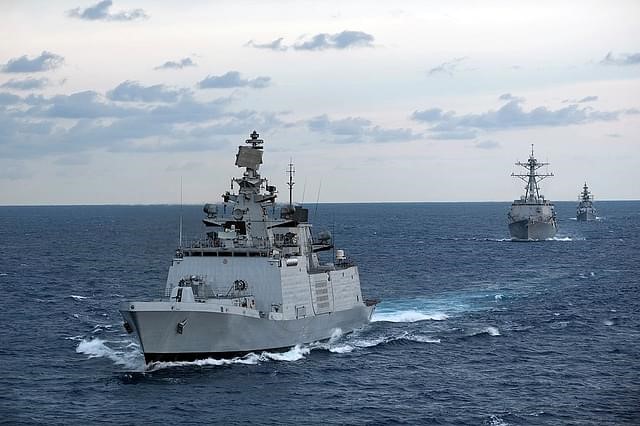India’s ambitious aspirations to emerge as a formidable maritime power are increasingly at odds with its growing record of naval mishaps. The recent collision between an Indian Navy submarine and a fishing vessel is yet another addition to an already troubling list of operational failures. While no fatalities were reported, the incident raises alarming questions about India’s ability to safely operate advanced naval equipment and manage complex maritime environments. The situation underscores the urgent need to address systemic issues in training, maintenance, and operational readiness that plague the Indian Navy.
The collision in open waters is particularly concerning given the modern detection and navigation technologies available on submarines. Such equipment is designed to prevent precisely these types of accidents. The failure to avert the collision exposes a troubling lack of situational awareness and highlights deficiencies in the navy’s operational coordination. This incident is not an isolated occurrence; it reflects a broader trend of recurring naval failures that have eroded confidence in India’s maritime capabilities.
India’s naval forces have faced repeated criticism over a series of high-profile accidents in recent years. The 2013 sinking of the INS Sindhurakshak, which killed 18 crew members, was one of the most devastating peacetime submarine disasters in history. The tragedy was attributed to explosions in its torpedo section, raising questions about maintenance practices and operational safety protocols. Similarly, the nuclear-powered INS Arihant suffered significant damage due to a hatch left open, rendering it inoperative for months. These incidents reveal systemic gaps in training, safety culture, and technical oversight, which are further compounded by bureaucratic inefficiencies in procurement and maintenance.
The 2022 BrahMos missile misfire into Pakistan was another major incident that brought India’s military competence under scrutiny. The misfire not only strained diplomatic ties but also exposed significant vulnerabilities in India’s command and control systems. Such mishaps demonstrate the potential for catastrophic consequences when advanced weaponry is entrusted to forces that may not be adequately trained or equipped to handle it responsibly.
These failures are not limited to military implications; they have broader geopolitical ramifications as well. India has positioned itself as a key player in the Indo-Pacific, seeking to counterbalance China’s growing influence in the region. However, repeated naval accidents undermine India’s credibility as a maritime security provider. Allies and partners who rely on India to play a stabilizing role in the Indian Ocean region may begin to question its reliability. The collision also highlights the risks of unintended escalations in international waters, where negligence or poor coordination could lead to conflicts with other nations or harm civilian vessels.
The latest submarine collision further underscores a systemic imbalance in India’s defense priorities. While India has invested billions in acquiring cutting-edge military hardware, it has failed to allocate sufficient resources toward crew training, operational discipline, and infrastructure development. The lack of focus on these critical areas has resulted in a navy that is equipped with sophisticated assets but is often unable to use them effectively. This disconnect between procurement and preparedness poses a serious threat to India’s maritime ambitions.
Moreover, these repeated failures have tarnished India’s reputation as an emerging maritime power. Rivals such as China, which has demonstrated significant advancements in its naval capabilities and operational efficiency, are quick to capitalize on India’s missteps. This dynamic weakens India’s strategic position in the region and undermines its efforts to project power and influence.
Addressing these issues requires comprehensive reforms within India’s naval forces. First, the navy must prioritize rigorous training programs that emphasize operational discipline and safety. Crew readiness should be treated as a critical component of India’s defense strategy, rather than an afterthought. Second, maintenance protocols must be overhauled to ensure the reliability of critical assets. Regular inspections and timely repairs are essential to prevent avoidable accidents. Third, India must strengthen its command and control systems to enhance coordination and minimize the risk of human error in complex scenarios.
India’s maritime ambitions are significant, and the stakes are too high to allow systemic inefficiencies to persist. The recent collision should serve as a wake-up call for the Indian Navy and the broader defense establishment to reevaluate their priorities. By addressing the underlying causes of these repeated failures, India can restore confidence in its naval capabilities and reclaim its position as a credible maritime power.

